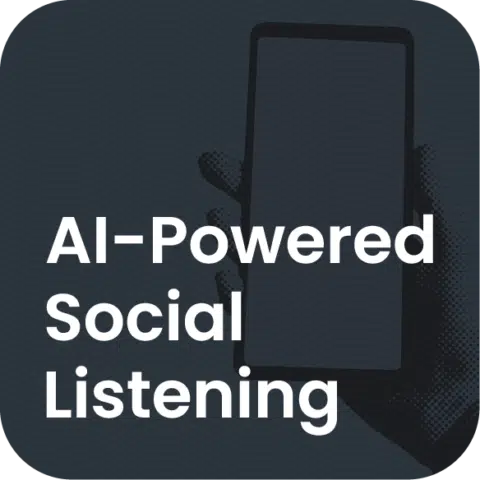In-person and virtual events can be great opportunities for networking, data mining, and gathering new prospects that you can convert into customers. That’s why you want to ensure the best attendance possible.
Businesses use many tried-and-true marketing methods for events, with email marketing being one of the biggest. However, the world of social media presents an unrivaled opportunity that allows you to reach a targeted audience and engage directly with potential attendees.
But social media is a crowded marketing space, and if you don’t know what you’re doing, you’re unlikely to see any results. That’s why we put together this list of social promotion tips and tricks that can help you boost attendance at your next online or physical event.
1. Promote your social media
To effectively promote your events on social media, you must ensure that you already have a substantial presence.
That means you must build your social media pages with accurate information and follow a good content strategy that targets your audience. This strategy should include brainstorming a variety of content ideas for social media to capture attention long before the event begins, such as countdowns, behind-the-scenes looks, or speaker introductions.
First, you’ll have to do a deep dive study on your target audience and their social media habits. What platforms do they frequent? What kinds of posts do they prefer? What times of day are they typically active on social media?
Once you have this data, you can build your social media presence around it. Also, make sure to check how to export LinkedIn lists to CSV before starting your campaign.
When you’re sure you have strong profiles in place, it’s time to start working on event promotion strategies and creating an engaged audience.
You can start by posting regular content, engaging with your audience, and grabbing more organic followers. If you’re on platforms like Instagram, you can boost your posts by increasing Instagram likes to improve their visibility, and complement your efforts with corporate event photography that highlights your brand’s personality and professionalism.
Consider including a QR code or your social media handles on all employee business cards, allowing you to spread the word more easily. You can also use tools like Scanova’s Social Media QR Code to consolidate all your event’s social profiles and promotional links into a single scannable code.
Also, include links to your social event pages on the homepage of your website and all event landing pages that you create. It’s important to constantly promote your social pages so that you can use them as a valid form of audience communication.
2. Use event hashtags in organic posts
When promoting your upcoming events, consider saving money by posting about them organically. However, social media algorithms can be tricky, specifically when it comes to business pages and events associated with them.
The social platforms want you to pay for targeted ads. These ads are beneficial, and we’ll discuss them more momentarily. But if you want to cast the widest net possible without breaking the bank, you’ll also want to throw some organic posts in there.
Use relevant, trending hashtags in your industry to ensure that these posts appear in front of the right people. You can also create a branded social wall during your event to showcase these hashtags live, encouraging attendees to post and engage in real time. This is especially useful for a virtual event, where online engagement keeps energy high.
3. Target ads at your audience
You can run targeted ads for your event on social platforms. It’s also possible to set ad targeting so you’ll only pay when someone converts. In this instance, a conversion can be considered a sign-up for a webinar, live streaming event, or Q&A session. That means you’re not wasting any money.
But to be effective, your ads must be attractive and targeted.
For example, for Facebook Ads and Google Ads, you can set targeting parameters, including zeroing in on prospective attendees based on their:
- Age
- Gender
- Geographic location
- Interests
- Occupation
- Gross income
- Dislikes
- And more!

Setting targeting parameters for social media ads
A well-designed event page should be the final destination of these ads, making it easy for users to learn about the event, register, and complete their purchase.
By fine-tuning your ads, you’ll improve your conversion rate and ensure better returns on your ticket sales. Ads that direct people to a dedicated event page are also one of the most effective event marketing tactics.
Monitoring performance metrics like click-through rate will help you understand whether your ad creative and targeting are working or if adjustments are needed.
4. Automate the social media process
To ensure that running your event’s social media event marketing plan isn’t going to take over your work life, consider investing in automation software.
For example, you can use social media scheduling systems like Hootsuite to plan all your posts for the month and then set them up to post on a day and time of your choice.

Social media scheduling
Additionally, regardless of which lead generation, CRM, or lead nurturing platform you’re working with, a system like LeadsBridge can make social media integration happen and bridge the gap between your ads and sales funnel by ensuring you reach your target audience.
Automation also allows you to focus on monitoring engagement and tracking results with analytics tools, instead of manually publishing posts every day.
5. Market using data from previous events
You should gather data from each event you hold. This includes gaining a good understanding of your target audience, including who they are, where they live, what they do, and what they liked or disliked about your event and its marketing.
That data should then be used when marketing your next event on social media. Think social media metrics.
If your current in-person or virtual event is something like the one you already did before, you can even use the copy of that event by rephrasing it using an AI paraphrasing tool. This way, you’ll save both time and money creating the copy for this event.
Use a report creator to consolidate all the information you’ve gathered and analyze it to create a future winning event promotion strategy. This is an important step that will allow you to create better events in the future and increase attendance with data-driven social media strategies.
Stronger insights also help you maximize ticket sales for upcoming events and optimize your event page to convert more visitors into attendees.
Boost your event promotion with Agility PR Solutions
Events can be a data gold mine for your business, but that’s only the case when people actually show up. You can use your social channels as an effective event marketing tool, provided you understand how your platforms work and how best to reach the masses.
To review, when marketing your events on social channels:
- Ensure that you have a solid social media following
- Use relevant event hashtags to boost engagement rates for organic posts
- Target ads to your core audience
- Automate your social media tasks
- Use data from past events to create a solid social media event marketing strategy
By following these five winning tips, you’ll be able to create a winning strategy that will attract new attendees to your in-person and virtual events.
Ready to take your event promotion to the next level? Try Agility PR Solutions to simplify your outreach, reach a broader audience, and boost attendance at your next event. Speak to our experts.




